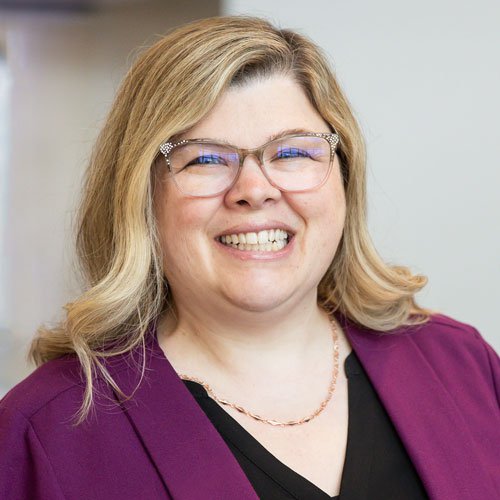newsletter
Sign up for the Marketer QuickLook Newsletter
SMPS Headquarters
625 North Washington Street
Suite 302
Alexandria, VA
22314-1936
email
info@smps.org
phone
703.549.6117




Contents
Contents
IN EVERY ISSUE
FEATURE
DOMAIN

Aligning What You Do With Who You Are

Be AI-Ready: Eight Steps to Structure Your Firm’s Tactical Plan

Rebranding: Increase Your Influence an Impact as a Marketing Leader
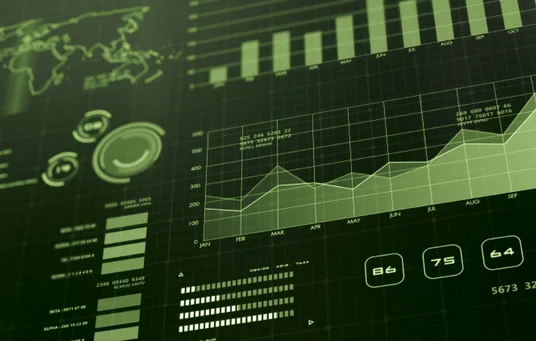
What Is a Digital Asset Manager and Why Do You Need One?
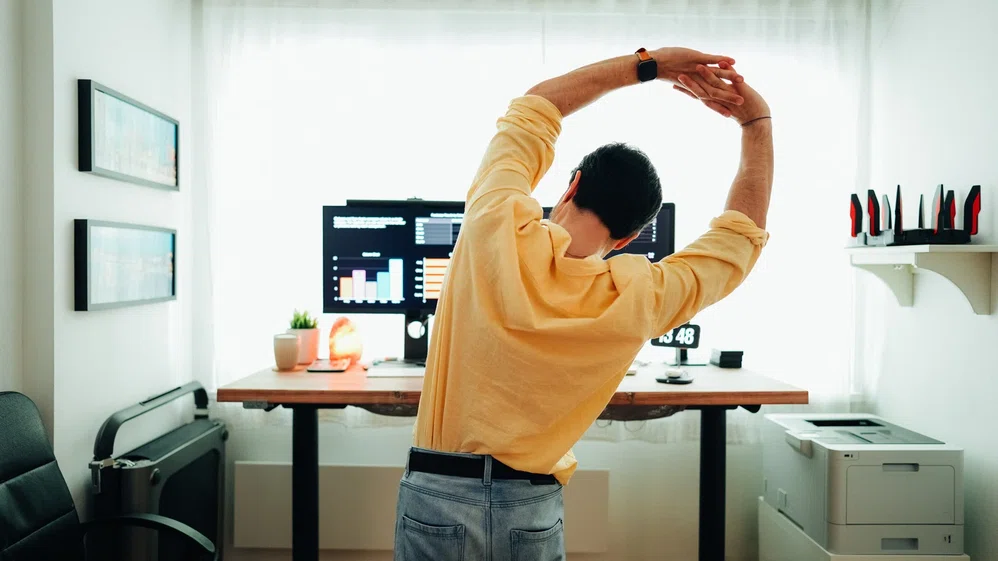
What does Safety Look Like for Marketing Professionals in A/E/C

Leading Through the Lens
Management
What Does Safety Look Like for Marketing Professionals in A/E/C?

domain
By Theresa Wynn, CPSM

An Interview with Jim Wright, Director of Safety and Health for Terracon Consultants, Inc.
When you think of workplace safety in A/E/C, often, what comes to mind is a man wearing a hard hat, work boots, thick gloves, safety glasses, and, maybe, a reflector vest. He might be in a manufacturing facility, on a construction site, or in a laboratory surrounded by heavy equipment.
As a marketing professional, you likely don’t see yourself in this image because you primarily work in an office setting. When you do venture out, it may be for coffee with a client or an event venue for a tradeshow. Your personal protective equipment is business attire.
Regardless of where you work, safety is of utmost importance. Your ability and willingness to make safety-centric choices is critical, not just for you and your coworkers but for every person in your life. And, if you’re a leader in your firm, safety must be an operational priority. One week after our industry’s designated Safety Week (the week of May 05, 2024), Jim Wright sat down with Marketing Team Lead Theresa Wynn, CPSM, to discuss “What does safety look like for marketing professionals in A/E/C?”
Theresa: A lot of marketing folks primarily work in front of a computer. What is the most common hazard for us desk workers? How can we mitigate this?
Jim: The biggest thing that comes to mind for most people is ergonomics – body position, including posture and hand and wrist position. You see an increased potential for carpal tunnel syndrome, cumulative hand and wrist injuries, and back pain.
There are many good resources about workstation setup, such as the correct height for your monitors and chair positioning. I provided links at the end of this article, but one thing I’d like to caution folks about when it comes to mitigating these types of hazards: Beware of sources that try to hard sell you a solution.
Theresa: If I work from home (WFH), what job-related hazards should I know about, and what safety measures should I practice?
Jim: It could be simple things, like tripping over cords, or pets; essentially any hazards you’d see in an office could happen at home (and then some). However, one of the bigger WFH concerns is actually psychological hazard. In the safety field, we now recognize psychological (or psychosocial) hazards as equivalent to physical hazards.1 When you WFH, separating work from personal time becomes more difficult, and you lose that work-life balance necessary for staving off mental exhaustion that can lead to burnout, anxiety, and worse.
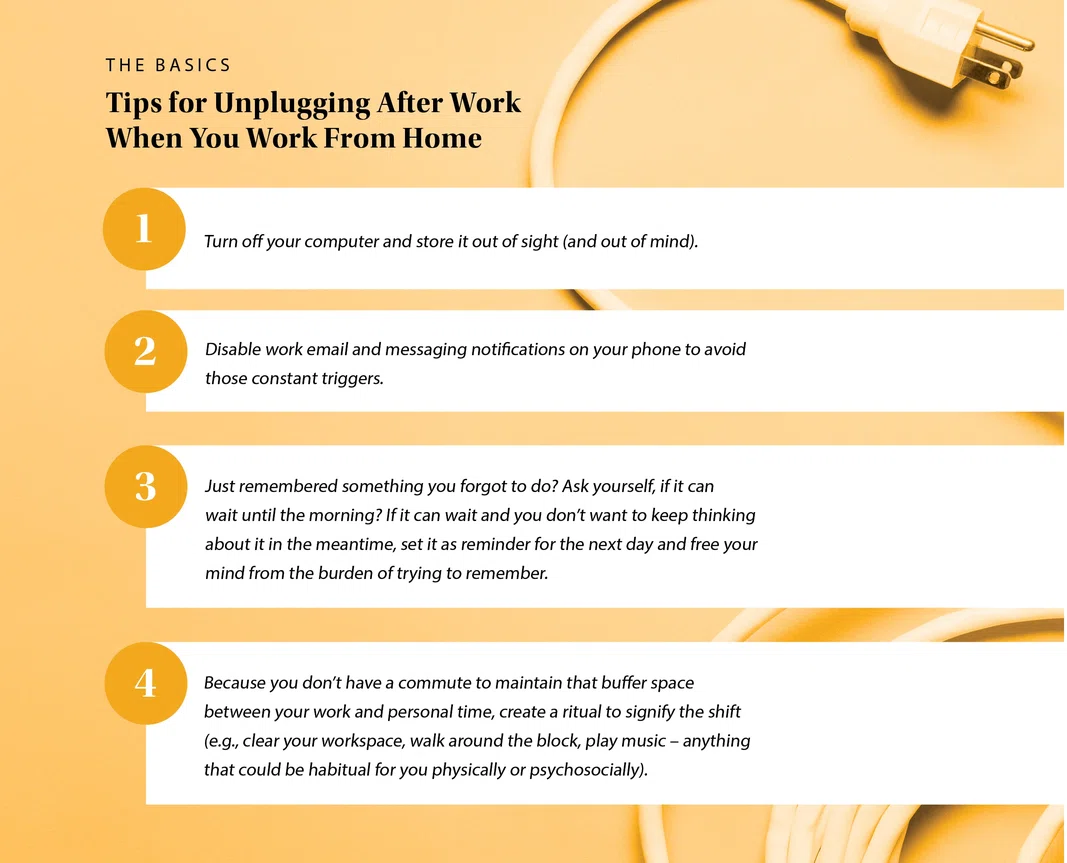
THE BASICS
Tips for Unplugging After Work
When You Work From Home
1
Turn off your computer and store it out of sight (and out of mind)
2
Disable work email and messaging notifications on your phone to avoid those constant triggers.
3
Just remembered something you forgot to do? Ask yourself, if it can wait until the morning? If it can wait and you don’t want to keep thinking about it in the meantime, set it as reminder for the next day and free your mind from the burden of trying to remember.
4
Because you don’t have a commute to maintain that buffer space between your work and personal time, create a ritual to signify the shift (e.g., clear your workspace, walk around the block, play music – anything that could be habitual for you physically or psychosocially).
Theresa: I mostly WFH, and a lot of us know the basics when it comes to disconnecting for the day. But something that’s helped me is a rule in my home – we can debrief about work as much as we want before dinner, but after dinner, no work talk is allowed.
In that same vein, and this may sound preachy, in the event that I’m working outside of business hours for whatever reason, I make it a point not to email others at that time. I use a schedule-send function to send those emails on the following workday. I don’t want to perpetuate a culture where working around the clock is, or perceived as, an expected norm.
Theresa: This question is a two-parter. Our company has an intentional safety culture and instills a duty to speak up when we see somebody operating unsafely. Yet, this still feels hard for a lot of folks to do. Why do you think that is?
Jim: Nobody wants to be a know-it-all and, at an early age, we are told not to tattle on others. Many see speaking up about safety as tattling. We need to understand that we’re just trying to prevent people from getting hurt; and it could potentially save lives.
On top of that, I could see a marketing professional finding it hard to speak out when they see somebody operating unsafely because they’re just not sure that their assessment is accurate. Someone who is in marketing might assume, “Oh, they’ve been doing this longer than I have, they probably know best.”
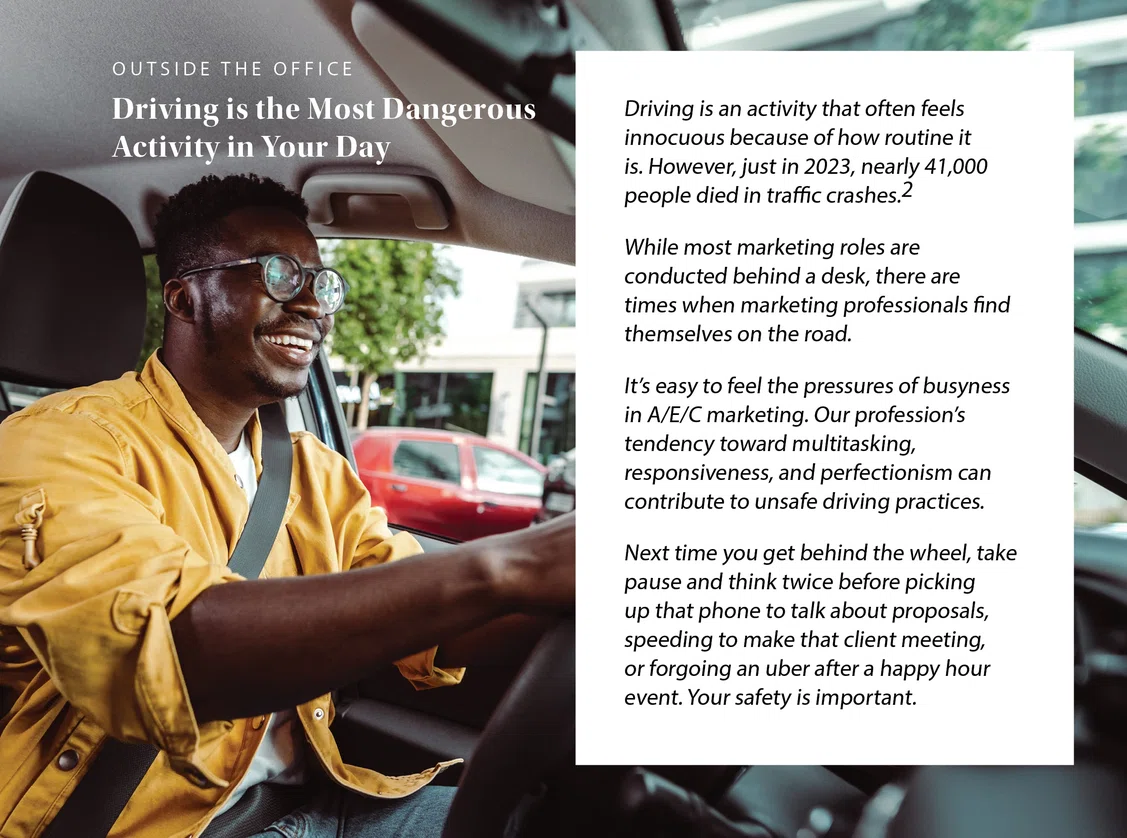
Outside the Office
Driving is the Most Dangerous Activity in Your Day
While most marketing roles are conducted behind a desk, there are times when marketing professionals find themselves on the road.
It’s easy to feel the pressures of busyness in A/E/C marketing. Our profession’s tendency toward multitasking, responsiveness, and perfectionism can contribute to unsafe driving practices.
Next time you get behind the wheel, take pause and think twice before picking up that phone to talk about proposals, speeding to make that client meeting, or forgoing an uber after a happy hour event. Your safety is important.
Theresa: What would your advice be to that marketing professional?
Jim: Operate with a sense of curiosity and ask the person why they’re doing something a certain way. For example, one could say, “I don’t know what this entails, it looks a little scary, why are you doing it this way?” Approach it from a standpoint of care, concern, and not wanting anyone to get hurt. Understanding that the importance of speaking up is not because accidents cost the company money or create a lot of paperwork, but because we care about that person’s well-being. If somebody truly believes you care about them, it’s a lot easier for them to accept what you’re speaking up about.
Theresa: Is there anything else you think an A/E/C marketing audience should know regarding their safety and the safety of others around them?
Jim: I think one of the most important things marketing professionals can use is their influence in the messaging they put out. For example, if you use a photo in a publication of someone not wearing safety glasses when using a saw, that sends the message that it’s acceptable. You have to set a high bar in your content and don’t assume that, because the person you’re photographing does for a living, they’re undoubtedly doing it correctly. Look for things like safety glasses, gloves, hard hats, etc. The image needs to show the safest way to do the job. And, if you don’t convey this in the visual content you publish, you’re doing a disservice to readers who may not know better and learn from your example.
On the flip side, for readers who do know better, your photo could do a disservice to your company. Anytime I recognize unsafe practices in a photo, it immediately makes me think of that company as unprofessional or unsafe. That visual representation says a lot about the company and may include unintentional messages.
Theresa: Jim, thank you so much for your time. This was really helpful.
Jim: You’re welcome. Safety is a topic for everyone, and the goal is to ensure everybody goes home safe (or stays home safe for those WFH folks) every day.
Share:
Jim Wright is the director of Safety and Health for Terracon Consultants, Inc. He has nearly 30 years of safety experience in drilling and construction operations. He is a certified MSHA surface and underground mining instructor, an approved OSHA Construction Safety instructor, and extremely knowledgeable in defensive driving and DOT regulations. Jim oversees Terracon’s corporate safety staff in implementing all employee health and safety programs across a national footprint of 175 offices with 6,000 employee-owners providing services in all 50 states.
Theresa Wynn, CPSM, is a marketing team lead at employee-owned Terracon Consultants, Inc. With eight years of experience in the A/E/C industries, Theresa spends her time expanding the marketing role, training a new marketing specialist, and serving as co-chair of the SMPS CO Education Committee. She is a Certified Professional Services Marketer (CPSM), has a bachelor’s degree in film from Cornell University and a master’s degree in critical studies from the University of Southern California.
Connect with Theresa on
READ NEXT



